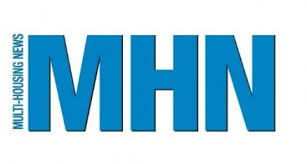At its core, the travel industry encourages new experiences and exploration. It invites guests to find comfort in unknown terrain and discover a sense of belonging amongst new people. Unfortunately, the travel industry has not historically operated in the same welcoming inclusivity that it promotes. “This world is a diverse one—so how could the very industry that promotes the exploration of that world not be?” inquires Tiana Attride, editor at Here Magazine. As the sole black editor, often the only black staff member and commonly the only person of color at press events, Attride is frustrated by the lack of inclusion practices within travel businesses and marketing. Sheila Johnson, co-founder of RLJ Companies, a Yardi client, founder and CEO of Salamander Hotels & Resorts, has experienced a similar discord between travel industry messaging and practices. In her 40 years as an entrepreneur and 15 years focusing on hospitality, she has seen small improvements in inclusion and equity practices. “But there’s also the rub,” Johnson reflects. “I recognize we still can and should do more.” Both women, like other minorities interviewed from the industry, see a clear path forward. A foundation for success The first step to create a more inclusive hospitality industry begins with acknowledgement. “An unfortunate number of people in this country – black and white – are far from coming to grips with institutional racism, the kind of racism that is also baked into the very fabric of so many American institutions,” says Johnson. “For this reason, many people still cannot even talk about racism, much less actually do something about it.” But hospitality providers are strongly positioned to tackle the issue head on. “Our industry is a living laboratory of cultures. Every day we make it possible for team members from...
New IPO Standards
Goldman Sachs’ Diversity Pledge
The first day of the Goldman Sachs diversity pledge has arrived. The investment bank announced that as of July 1, 2020, it will require diversity amongst the board members of new applicants in the United States and Europe. When announced in January, the investment bank could not have foreseen how poignant the pledge would become. All eyes on diversity Late spring and summer brought an onslaught of social issues to the forefront of American culture. As the nation attempted to establish a new normal amidst COVID-19 precautions, essential workers kept the economy and healthcare systems afloat. During these times, 1 in 3 women were considered essential workers. Also during this time, researchers revealed that the pandemic brought worsening economic and social inequalities for women. The necessary role of women in the workforce juxtaposed the inadequate measures to help them balance the demands of work and home. To add to the complexity, March marked the beginning of social unrest. A series of police-involved shootings sparked the first wave of protests highlighting discrimination against minorities within the justice system. The protests continued into June, joined by Pride Month events that highlight the struggles of the LGTBQ community in the workplace and healthcare system. Consumers and employees across the U.S. forced businesses and institutions to examine their inclusion practices or lack thereof. Goldman Sachs CEO David Solomon could not have foreseen any of this back in January. He could not have known that pandemic fallout and social justice demonstrations would place the bank at the forefront of the social equity revolution on Wall Street–but timing is everything, even when it’s unplanned. Bye bye “bro boards” Goldman Sachs now requires all American and European IPOs to have at least one “diverse” board member. Solomon emphasized that women are...
Sales Tax Online
Supreme Court Ruling
It’s no secret that internet shopping has given brick and mortar stores a run for their money. Convenience and limited taxes has worked in favor of virtual retailers for years. A new internet tax law, however, tosses the ball back into the court of in-state stores. Sales Tax Law Revised The U.S. Supreme Court has ruled that states can now require sales tax on out-of-state purchases made online. The decision passed with a 5-to-4 vote, with those in favor on both sides of the aisle. Liberal Justices Anthony Kennedy and Ruth Bader Ginsburg were joined by conservative Justices Clarence Thomas, Samuel Alito, and Neil Gorsuch. The ruling removes protections from out-of-state vendors who could operate without charging sales tax, provided that they had no brick-and-mortar presence in-state. The old laws—created before the internet was even a dream–gave online retailers a competitive advantage. They could offer the same products at lower prices than in-state stores. Now, it will be up to the states whether or not they want internet retailers to charge sales tax on items sold within their borders. Some online retailers were already charging sales taxes. Others, such as Amazon, created a system of taxation that included sales tax on direct sales but excludes sales tax on indirect sales. It is uncertain how the ruling will impact such systems. Within the new law lies a few surprises. Small businesses will not be required to collect sales taxes if they generate less than $100,000 in sales and have fewer than 200 transactions in the state per year. This allows small enterprises, such as those you might find on Etsy, to build a following before the sales tax requirement hits. The law will also make available free sales tax collection software to help businesses adjust...
MHN Honored
WEBSITE WINS NAREE GOLD
NEW YORK CITY (June 23, 2016) – The website of Multi-Housing News, an online real estate publication focused on the multifamily industry, was awarded for excellence this month by the National Association of Real Estate Editors (NAREE) at its 50th annual conference. Multi-Housing News earned the “Best Web Site Gold Winner” honor for its website, multihousingnews.com, which was redesigned with a new look and feel in 2015. The NAREE judges, a group of journalism professors at Ohio University, commented: “The page has a logical and attractive presence. It is full of information and multimedia and breaking news, organized so that the fresh news automatically appears on the first screen. Users can study market data broken down by region and hone in on property types that are best suited for them. There is something for everyone.” All of the MHN managing and associate editors are named as contributors to the award, but Editorial Director Suzann Silverman noted that the programming team that designed the new site deserves accolades as well. The web design team is based in Saskatoon, Saskatchewan, while the content team for MHN is located in New York City and Cluj-Napoca, Romania. “We are proud of how everyone worked together to create this site and so pleased to receive this recognition from our colleagues,” said Jack Kern, publisher/research director for Multi-Housing News and its sister publication, Commercial Property Executive. Multi-Housing News and Commercial Property Executive have won numerous awards from NAREE for websites, print publications, and individual articles. Yardi acquired both publications in 2009. About NAREE Founded in 1929, the National Association of Real Estate Editors recognizes excellence in writing, editing and reporting each year. NAREE helps members advance their careers as staffers and freelancers for major digital, print, and broadcast news outlets....
2016 Real Estate Trends
New year brings similar questions
For both the residential and commercial real estate markets, 2015 brought questions. Would interest rates rise? Would Millennials buy? Would the market keep rising, or are we on the verge of another bubble? As the year draws to a close, these questions remain, though the prevailing mood is optimistic. While the overall market continues its upward climb, moderation has taken hold. It’s clear the gains and price inflations of the past 12 months are giving way to gradual increases, better credit scores and (slightly) upward momentum. In October, PricewaterhouseCoopers and the Urban Land Institute (ULI) released their annual Emerging Trends in Real Estate report. With an eye towards predicting anticipated real estate trends for 2016, the report’s authors conducted over 400 interviews and collected almost 1500 responses. Participants included investors, fund managers, brokers and consultants. The report’s overall mood? Cautious optimism. “You can never forget about cycles,” declares the report, “but the next 24 months look doggone good for real estate.” Commercial Uprising For the commercial real estate market, positive employment numbers are spurring demand for business centers and high-rises. In New York City, for example, over 9.7 million square feet of office space will be added in the next year – an increase unseen in the city for over two decades. The ULI report authors believe that many of these new commercial spaces will include innovative, modern designs created to lure young, in-demand talent. A combination of “entrepreneurial innovation matched up with industry acceptance,” these buildings will dominate a small, but influential corner of the commercial real estate market, pushing projects and encouraging investment. In order to capitalize on this trend, commercial real estate executives will need to be able to analyze property data, control budgets and make future projections quickly and accurately. With an end-to-end, commercial property management platform like Yardi Voyager Commercial, commercial real estate owners, investors and developers can efficiently manage operation strategies and maneuver funds and resources effectively and profitably. The Rise of the Second City Though New York City and San Francisco are real estate behemoths casting large shadows across their respective coasts, their more humble neighbors will soon steal the spotlight. Deemed “18-hour Cities” in the ULI report, these smaller metropolises are beginning to experience population growth and increased commercial real estate investment – a trend the report anticipates will only grow stronger in the coming year. Hot markets like Austin, Denver or Charlotte, along with mid-sized townships sitting along the borders of Dallas, Atlanta and Seattle, can trace much of this commercial activity to the addition of “round-the-clock” businesses. Restaurants, shops and other professional services are beginning to expand their hours of operation from the standard 12 to 18 or more. For potential residents, access to all the amenities of a larger metropolis like New York City at a more affordable price is attractive. The ability to strategically market to disaffected city-dwellers will be essential to capitalizing on this migration trend. One way real estate professionals, property owners and managers can take advantage of renewed interest in their area is to leverage dynamic, multi-channel marketing with tools like those offered by RENTCafe®. With the RENT Café®, users will be able to entice prospects and retain current residents with marketing campaigns precisely fashioned to highlight the benefits of moving to these up-and-coming second cities. Slice of the Suburbs With all the excitement surrounding the urban real estate market, you’d think the suburbs would be slowly fading into oblivion. Instead, multitudes of Millennials are migrating to the outskirts of town. As this generation finally ages into marriage and family, many of those young urban hipsters will soon be trading in their rented lofts for suburban homesteads. They won’t just be embracing the dream of the white picket fence. These young home buyers will be following the job market. Almost 85% of new employment opportunities continue to be “located outside the center-city core” according...
MHN, CPE Now Digital-Only...
Online industry insight
Two publications that deliver news and insight about the multifamily and commercial sectors of the real estate industry, Multi-Housing News and Commercial Property Executive, are moving to an online-only content distribution model. “We determined that the resources associated with printing and delivering are better allocated to giving our readers the absolute best content in the business. Readers of both MHN and CPE have told us they want more information and faster than we can provide it in a printed, monthly magazine,” said Daniel Waldman, publisher of both magazines. The change is effective beginning with the magazines’ July 2012 issue. The move echoes the decisions of many print publications to optimize their online content for a readership that increasingly prefers to read news via laptop computer, mobile devices or tablets. Read the full press release on Yardi.com. You can also catch regular insight pieces from Diana Mosher, Editorial Director of Multi-Housing News, and Suzann Silverman, Editorial Director of Commercial Property Executive, weekly right here on The Balance...






